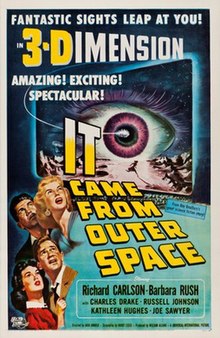
The Day the Earth Stood Still is a 1951 American science fiction film from 20th Century Fox, produced by Julian Blaustein and directed by Robert Wise. It stars Michael Rennie, Patricia Neal, Hugh Marlowe, Sam Jaffe, Billy Gray, Frances Bavier and Lock Martin. The screenplay was written by Edmund H. North, based on the 1940 science fiction short story "Farewell to the Master" by Harry Bates. The film score was composed by Bernard Herrmann. Set in the Cold War during the early stages of the nuclear arms race, the storyline involves a humanoid alien visitor who comes to Earth, accompanied by a powerful robot, to deliver an important message that will affect the entire human race. In 1995, the film was selected for preservation in the United States National Film Registry as "culturally, historically, or aesthetically significant".

The Thing from Another World, sometimes referred to as just The Thing, is a 1951 American black-and-white science fiction-horror film, directed by Christian Nyby, produced by Edward Lasker for Howard Hawks' Winchester Pictures Corporation, and released by RKO Radio Pictures. The film stars Margaret Sheridan, Kenneth Tobey, Robert Cornthwaite, and Douglas Spencer. James Arness plays The Thing. The Thing from Another World is based on the 1938 novella "Who Goes There?" by John W. Campbell.
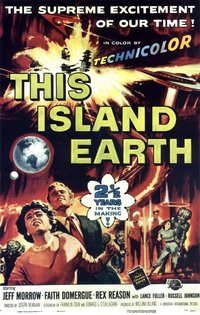
This Island Earth is a 1955 American science fiction film produced by William Alland, directed by Joseph M. Newman and Jack Arnold, and starring Jeff Morrow, Faith Domergue and Rex Reason. It is based on the 1952 novel of the same name by Raymond F. Jones. The film, distributed by Universal-International, was released in 1955 on a double feature with Abbott and Costello Meet the Mummy.

It! The Terror from Beyond Space is an independently made 1958 American science fiction horror film, produced by Robert Kent, directed by Edward L. Cahn, that stars Marshall Thompson, Shawn Smith, and Kim Spalding. The film was distributed by United Artists as a double feature with Curse of the Faceless Man.
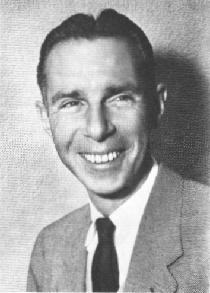
Jack Arnold was an American film and television director, considered one of the leading filmmakers of 1950s science fiction films. His most notable films are It Came from Outer Space (1953), Creature from the Black Lagoon (1954), Tarantula (1955), and The Incredible Shrinking Man (1957).

Robinson Crusoe on Mars is a 1964 American science fiction film directed by Byron Haskin and produced by Aubrey Schenck that stars Paul Mantee, Victor Lundin, and Adam West. It is a science fiction retelling of the classic 1719 novel Robinson Crusoe by Daniel Defoe. The film was distributed by Paramount Pictures and filmed in Technicolor and Techniscope.

The Monolith Monsters is a 1957 American black-and-white science fiction film from Universal-International, produced by Howard Christie, directed by John Sherwood, and starring Grant Williams and Lola Albright. The film is based on a story by Jack Arnold and Robert M. Fresco, with a screenplay by Fresco and Norman Jolley.
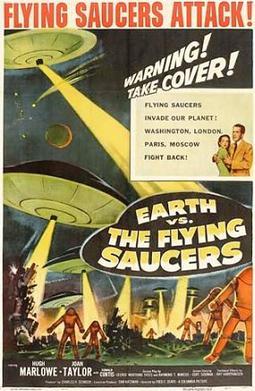
Earth vs. the Flying Saucers is a 1956 American science fiction film from Columbia Pictures. It was produced by Charles H. Schneer, directed by Fred F. Sears, and stars Hugh Marlowe and Joan Taylor. The stop-motion animation special effects were created by Ray Harryhausen. The storyline was suggested by the bestselling 1953 non-fiction book Flying Saucers from Outer Space by Maj. Donald Keyhoe. The film was released as a double feature with The Werewolf.

Queen of Outer Space is a 1958 American science fiction film shot in DeLuxe Color and CinemaScope. Produced by Ben Schwalb and directed by Edward Bernds, it stars Zsa Zsa Gabor, Eric Fleming, and Laurie Mitchell. The screenplay by Charles Beaumont, about a revolt against a cruel Venusian queen, is based on an idea supplied by Ben Hecht and originally titled Queen of the Universe. Upon its release, the film was promoted by Allied Artists and distributed to some locations as a double feature with Frankenstein 1970 starring Boris Karloff.

I Married a Monster from Outer Space is a 1958 American horror science fiction film from Paramount Pictures, produced and directed by Gene Fowler Jr., that stars Tom Tryon and Gloria Talbott. Paramount released the film as a double feature with The Blob.
Queen of Blood is a 1966 science fiction horror film produced by George Edwards and Samuel Z. Arkoff, directed by Curtis Harrington, that stars John Saxon, Basil Rathbone, Dennis Hopper, and Judi Meredith. The film is based on the screenplay for the earlier Soviet feature film Mechte Navstrechu. Director Harrington also reused special effects footage from that film, as well as footage from the Soviet science fiction film Nebo Zovyot.

The Man from Planet X is a 1951 independently made American black-and-white science fiction horror film, produced by Jack Pollexfen and Aubrey Wisberg, directed by Edgar G. Ulmer, that stars Robert Clarke, Margaret Field, and William Schallert. The film was distributed by United Artists.
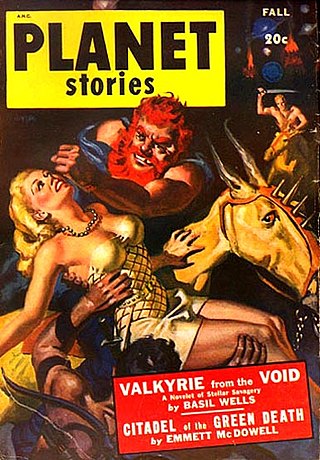
"Mars Is Heaven!" is a science fiction short story by American writer Ray Bradbury, originally published in 1948 in Planet Stories. "Mars Is Heaven!" was among the stories selected in 1970 by the Science Fiction Writers of America as one of the best science fiction short stories published before the creation of the Nebula Awards. As such, it was published in The Science Fiction Hall of Fame Volume One, 1929–1964. It also appears as the sixth chapter of The Martian Chronicles, revised as "The Third Expedition."

Ancient astronauts have been addressed frequently in science fiction and horror fiction. Occurrences in the genres include:
"A Day in Beaumont" is the first segment of the twenty-fourth episode of the first season of the television series The Twilight Zone. In this segment, a couple spends an entire day trying to convince the people of a small town that aliens have landed nearby.

The War of the Worlds is a 1953 American science fiction film directed by Byron Haskin, produced by George Pal, and starring Gene Barry and Ann Robinson. It is the first of several feature film adaptations of H. G. Wells' 1898 novel of the same name. The setting is changed from Victorian era England to 1953 Southern California.

Outer Touch is a 1979 British science fiction sex comedy film directed by Norman J. Warren and starring Glory Annen, Barry Stokes and Ava Cadell.

Invisible Invaders is a 1959 American science fiction film starring John Agar, Jean Byron, John Carradine and Philip Tonge. It was produced by Robert E. Kent, directed by Edward L. Cahn and written by Samuel Newman.
GadgetGang in Outer Space is a 2017 Brazilian 3D computer-animated science fiction comedy film directed and written by Ale McHaddo. It was produced by McHaddo, Carolina Fratinni, Guilerme Machado de Sá and Melina Manasseh. The film was released in Brazilian cinemas on 23 February 2017 by Imagem Filmes and was later released in United States on DVD on July 4, 2017.
